A drive around the Kintyre Peninsula
Had it not been for Paul McCartney singing about the Mull of Kintyre, few would visit this peninsula. Nevertheless, it is well worth placing it on your itinerary. Kintyre is pure natural beauty. This is not at all about a bucket list of attractions. You come to Kintyre to take a break from the hectic world and connect with nature.
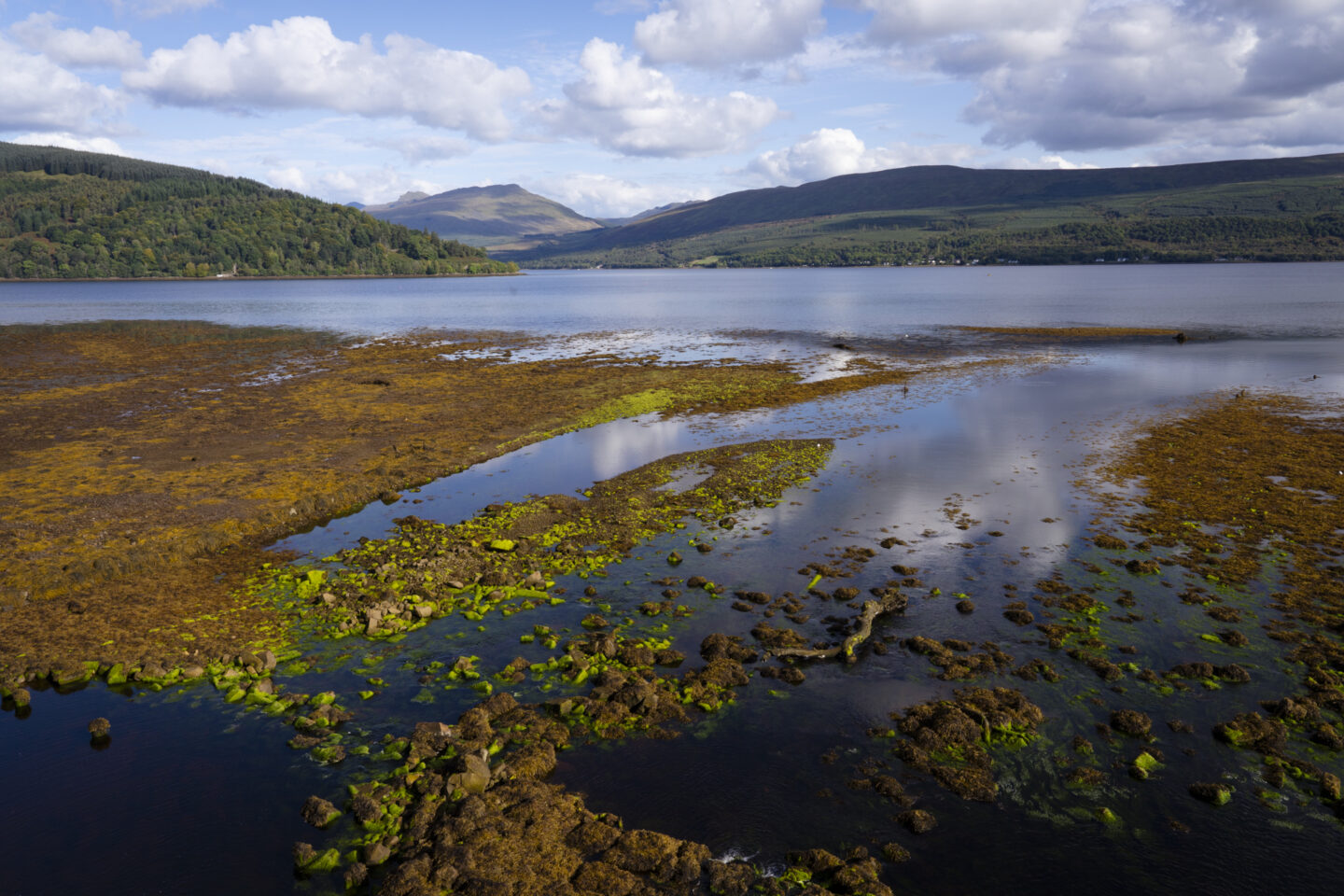
Tarbert
We begin our tour around Kintyre in the picturesque fishing town of Tarbert. Multicolored fishermen's cottages line the bayside harbor, overlooking Loch Fyne. You can easily spend a few hours here if you enjoy photography and hiking.
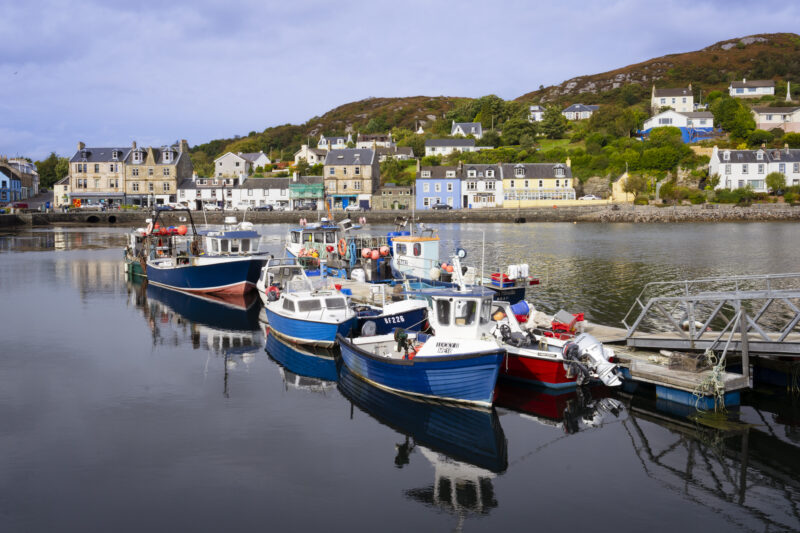
From the village, a scenic walk takes you to the ruins of Bruce's Castle that dates back to the 1200s. Tarbert is also the starting point for the Kintyre Way. The 100-mile hiking trail runs in a circle along the entire coast of the Kintyre peninsula.
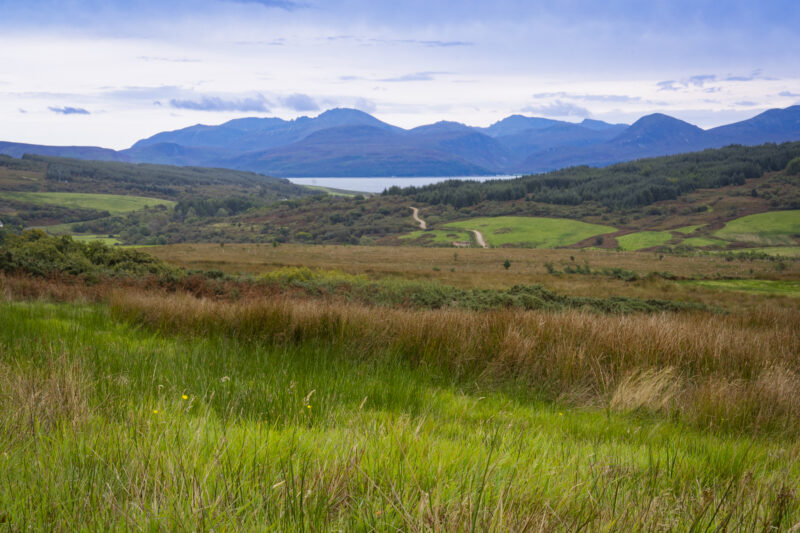
Skipness
A deserted one-lane road takes us to Skipness, a small village on the east coast of Kintyre. Skipness is special because of its castle and adjoining chapel that date from the 13th and 14th centuries.
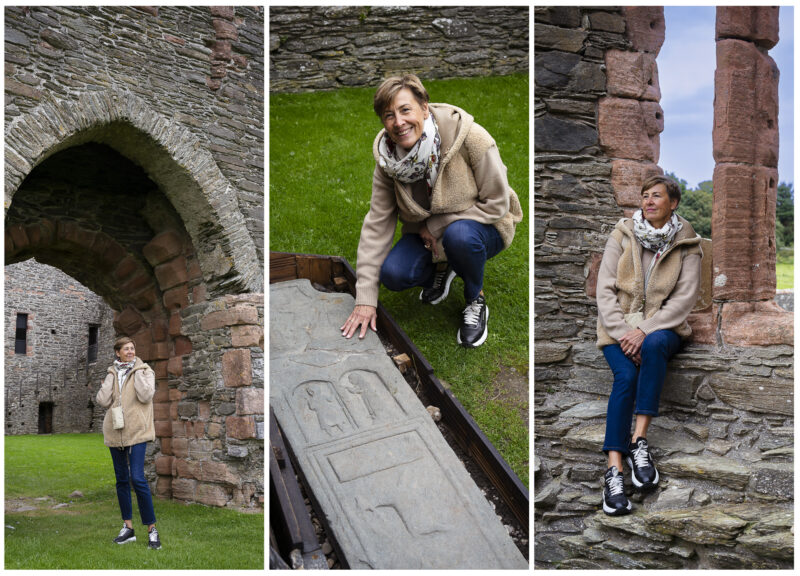
Skipness Castle
Skipness Castle is one of the oldest castles in Scotland. The castle was built in the 13th century by the local lords MacSween. Over the centuries, the castle changed ownership several times. It passed into the hands of the MacDonalds in 1325 and finally into those of the Campbells, Earls of Argyll, in 1503. Skipness Castle was strategically important, for whoever held the castle had power and control over this important part of Argyll. The Campbells added a tower to the castle which improved the standard of living of its residents. The ruins still give a good indication of what the walled castle must have looked like at the time. You can climb the tower itself via a stone staircase.
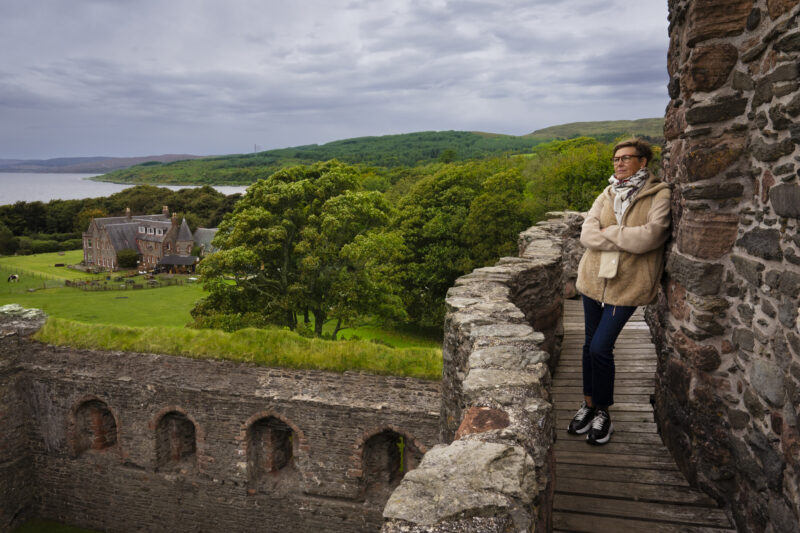
Skipness Chapel
We make a short walk to the ruins of the chapel and cemetery. The chapel dates back to the 14th century and only its outer walls remain. In the cemetery, which is still in use, there are several tombstones dating back to the Middle Ages. On one of them you can clearly distinguish the image of a knight.
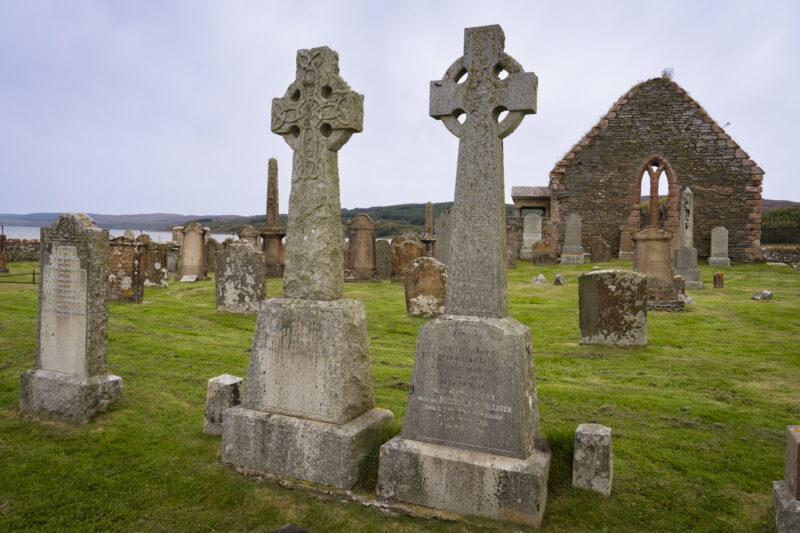
Skipness Smokehouse
Next to the castle is a small smokehouse. The cold and hot smoked salmon of Skipness Smokehouse has won several awards. The smoking is done with wood chips from old whisky barrels obtained from local distilleries. The unique house blend produces an intense but sweet smoke that gives the salmon its outstanding taste.
Cold smoked salmon
For cold-smoked salmon, Skipness Smokehouse uses the dry method. The fish fillets are cured in a mixture of salt and brown sugar for 12 to 14 hours. Once the fish has lost the proper amount of moisture, it is rinsed and placed on racks to dry. Then the fish is smoked at low temperature for 18 hours.

Hot smoked
For the hot smoked salmon, Skipness Smokehouse switches to the wet method. The salmon lies in a brine of salt and sugar for an hour and a half, is rinsed and dried. The fish is then cold smoked for 8 hours. Next, the temperature of the oven is raised. The fish is turned and smoked further until the right texture is reached. On average, this takes an additional 4 hours.
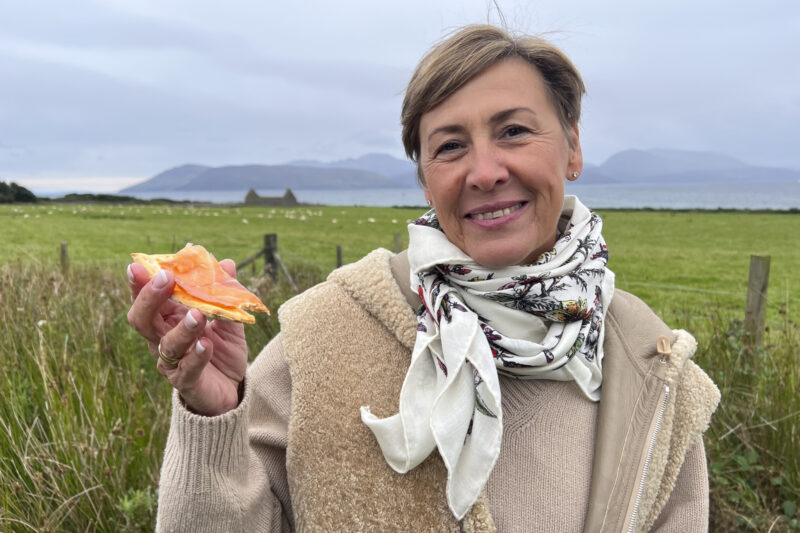
Coasts of Kintyre
From Skipness we drive toward Campbeltown which lies on the southern tip of Kintyre. We pass the beautiful stretches of Westport Beach on the west coast of the peninsula. On this side of the peninsula, you will find stunning, deserted beaches, clear blue waters and an abundance of seabirds.
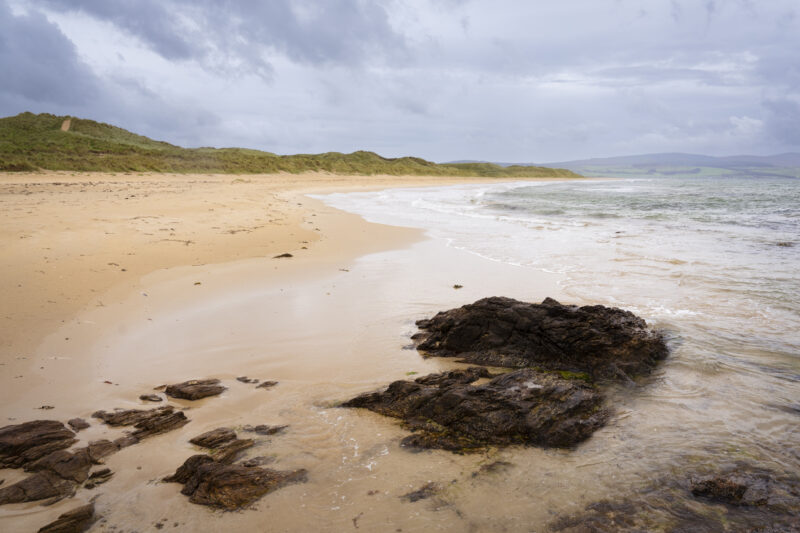
On beautiful days, you can see seals on the black rocks enjoying the sun. The whole scene is peaceful and breathtaking. As we drive further south, the coast only gets more beautiful until we reach Machrihanish. Here you are truly far away from everything.
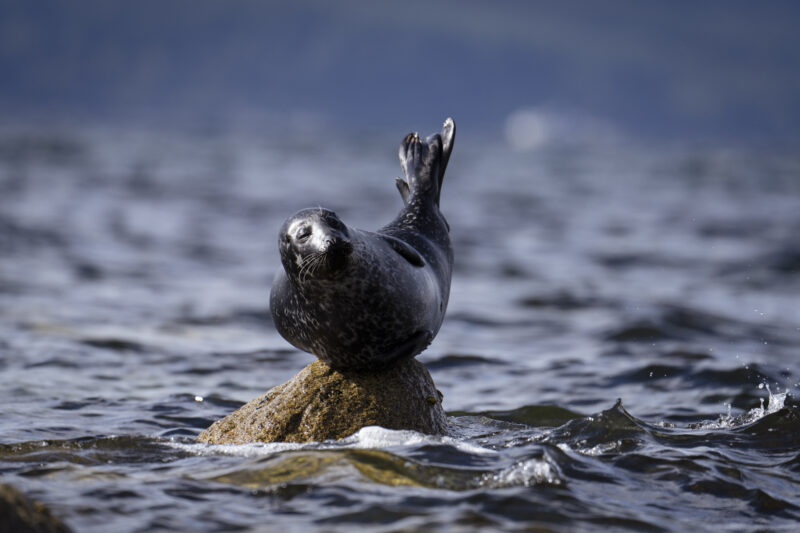
Campbeltown
We end our exploration of Kintyre in the town of Campbeltown. During the 19th century, Campbeltown had more than 30 distilleries and was known as the whisky capital of the world. Now only 3 distilleries remain.
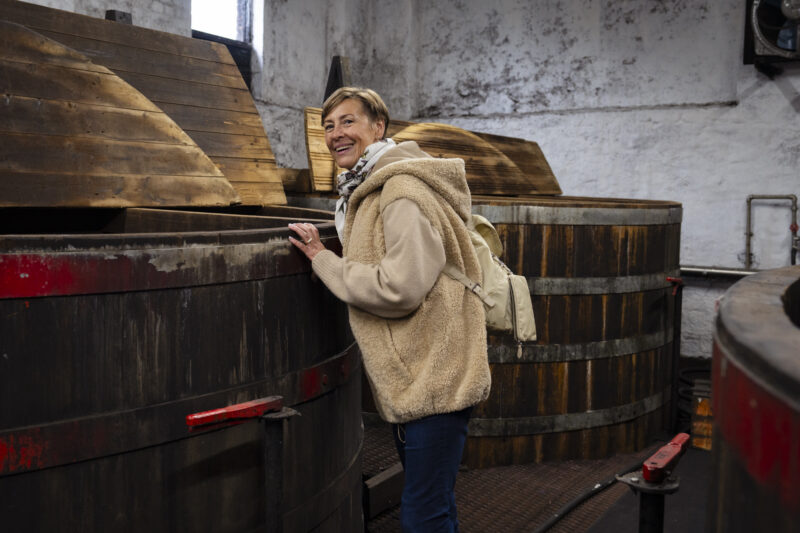
Springbank
Springbank is one of three whisky distilleries in the Campbeltown region and is unique in more ways than one. It is Scotland's oldest independent distillery that is still wholly owned by the founding family. Established in 1828, the distillery is now run by the fifth generation of Mitchells. It is also the only distillery in Scotland where every part of production is done on the premises. That makes a visit to Springbank unique. You see the entire process from the malt floor to the bottle. Springbank's motto is small and slow and that results in the most manually produced whisky in Scotland. It is hard to conceive but in this distillery all the equipment is operated manually, and all notes are handwritten.
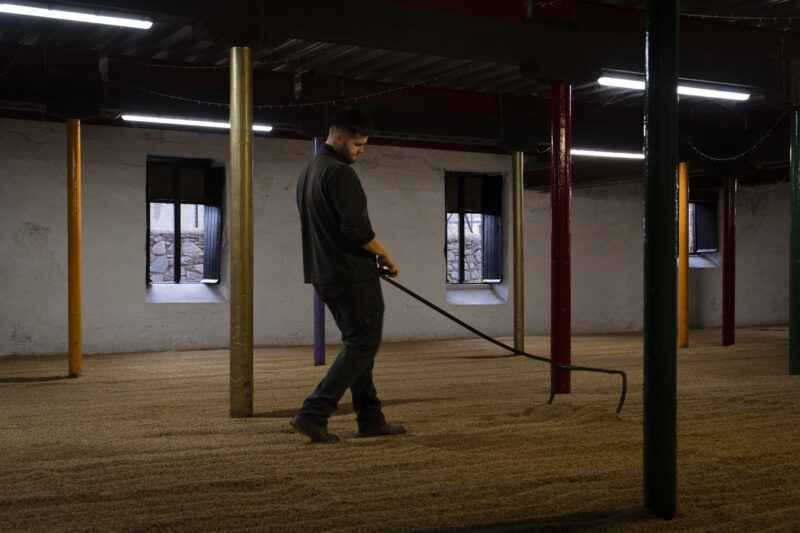
Springbank produces three single malt whiskies, each following its own production process: Springbank, Hazelburn and Longrow. For tasting, I select the unique two-and-a-half times distilled Springbank single malt. The whisky is slightly peaty and medium-bodied with aromas of vanilla, spices and sweet sherry. Slàinte!

Would you like to prepare your own hot smoked salmon? Here’s how to do it.